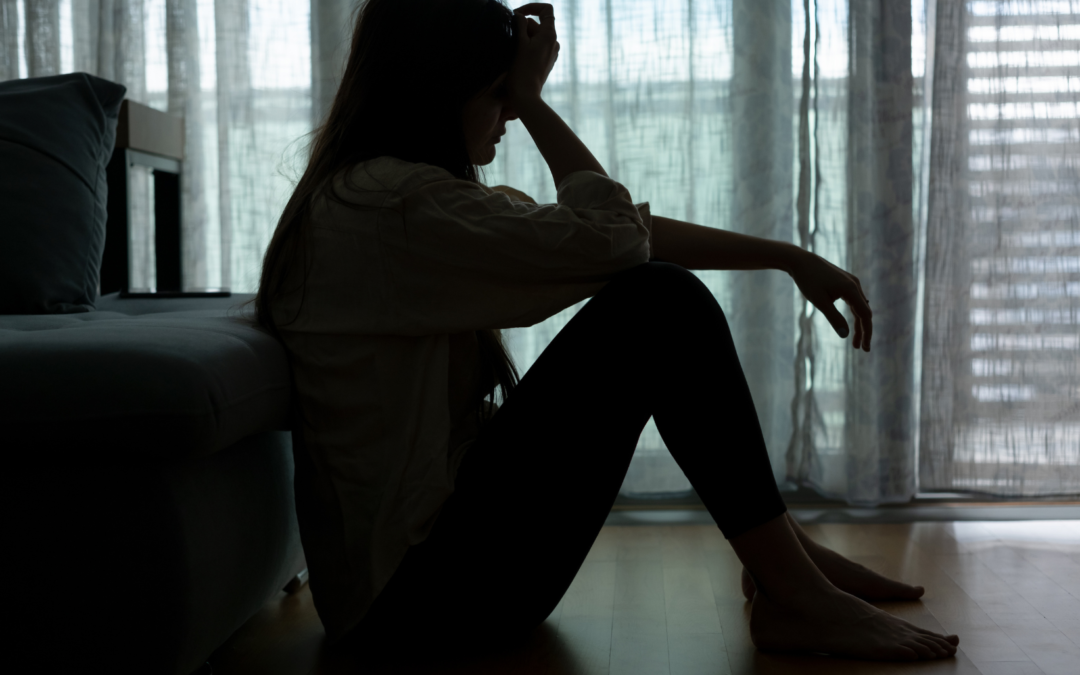Depression isn’t a one-size-fits-all condition. If you’ve ever felt overwhelmed by sadness or an inexplicable weight pressing down on you, it’s important to know that you’re not alone—and that there are different kinds of depression.
Each type looks and feels different, and recognizing these distinctions can help you understand what you might be going through, or even help someone you care about.
Let’s explore these kinds of depression in a way that hopefully feels less daunting and more like taking the first step towards understanding.
What Are the Different Kinds of Depression?
Depression manifests in various ways.
Some people experience deep lows for a few weeks, while others may have low-level sadness that seems to last for years.
The kinds of depression can vary in intensity, duration, and even the specific symptoms you experience.
1. Major Depressive Disorder (MDD)
Major Depressive Disorder, or MDD, is what most people think of when they hear the word “depression.”
It’s marked by a period of intense sadness or a loss of interest in daily life.
If you’ve felt down for more than two weeks—feeling like there’s a cloud hanging over you that just won’t go away—this could be MDD. You might notice that you’re constantly tired, have trouble sleeping or eating, or simply feel like nothing brings you joy anymore.
But know this: MDD is treatable. You don’t have to feel this way forever.
Reaching out for help, whether through therapy, medication, or support from loved ones, can make a world of difference.
2. Persistent Depressive Disorder (PDD)
Persistent Depressive Disorder (PDD), also called dysthymia, is a kind of depression that lasts for years, sometimes so long that you might start to think that “this is just how life is.”
The sadness isn’t as intense as Major Depressive Disorder, but it’s more of a constant, lingering feeling that never fully goes away.
If you’ve been feeling low, tired, or down for what seems like forever, you could be dealing with PDD.
Even though it’s long-lasting, PDD can be treated, and it’s okay to seek help if you’re ready to start feeling like yourself again.
3. Bipolar Disorder (Manic Depression)
Bipolar Disorder is unique because it involves not just depressive episodes but also periods of extreme highs, known as mania.
During the lows, you may feel hopeless or lost, just like someone with Major Depressive Disorder.
But in the high periods, you might feel unstoppable, filled with energy, and full of ideas—almost like you’re on top of the world.
However, these manic episodes can also lead to risky behaviors and decisions that feel out of control.
If you think your mood swings between these two extremes, you could be experiencing Bipolar Disorder.
Knowing the kinds of depression helps because it can explain why you feel so “up” one moment and so “down” the next.
4. Seasonal Affective Disorder (SAD)
For some, depression comes and goes with the seasons.
If you notice that you feel down, tired, or unmotivated during the colder, darker months, you might be experiencing Seasonal Affective Disorder (SAD). This type of depression is closely linked to the reduced sunlight in the winter months, and it can make it hard to get through the day, even if things seemed okay just a few months before.
Light therapy, along with other treatments, has been found to help. If the winter months leave you feeling sad or drained, know that you’re not alone—many people experience this too, and there’s support available.
5. Postpartum Depression (PPD)
After having a baby, many mothers experience a range of emotions, but for some, the feelings of sadness, anxiety, or even despair become overwhelming.
Postpartum Depression (PPD) is a serious condition that affects women after childbirth, making it hard to care for themselves and their newborns.
If you’re feeling this way after giving birth, please know that it’s not your fault, and you’re not alone. So many new mothers go through this, and with the right help, whether it’s therapy, support groups, or talking to your doctor, you can start to feel like yourself again.
6. Atypical Depression
Atypical Depression might sound, well, atypical—but it’s actually pretty common.
This type of depression has some unique symptoms. For example, unlike other kinds of depression, people with Atypical Depression can experience mood improvements when something positive happens.
But this boost is temporary, and the sadness quickly returns.
If you notice yourself sleeping too much, eating more than usual, or feeling weighed down, Atypical Depression could be at play.
The good news? Like other kinds of depression, it’s treatable with the right care.
7. Psychotic Depression
Psychotic Depression is one of the more severe types of depression, where people experience symptoms of major depression along with episodes of psychosis, such as hallucinations or delusional thinking.
These thoughts are often dark or troubling, which can make this kind of depression particularly hard to navigate.
If this sounds familiar, it’s so important to reach out for help immediately. Psychotic Depression can be managed with the right combination of treatments, but you don’t have to go through it alone.
FAQs
- What are the different kinds of depression?
There are several kinds of depression, including Major Depressive Disorder, Persistent Depressive Disorder, Bipolar Disorder, Seasonal Affective Disorder, Postpartum Depression, Atypical Depression, and Psychotic Depression.
- How do I know which type of depression I have?
It can be hard to know exactly what kind of depression you’re experiencing on your own, but a mental health professional can help you figure it out. They’ll ask about your symptoms, how long you’ve had them, and how they affect your daily life.
- Is depression curable?
While depression might not be “curable” in the traditional sense, it’s highly treatable. Many people find relief and manage their symptoms through therapy, medication, and lifestyle changes.
- Can you have more than one kind of depression at the same time?
Yes, it’s possible to experience more than one type of depression.
For example, someone with Persistent Depressive Disorder may also experience major depressive episodes (this is sometimes called “double depression”).
- What causes depression?
Depression can be caused by a combination of factors, including genetics, brain chemistry, life events, and even certain medical conditions.
- Can seasonal depression last all year?
Typically, Seasonal Affective Disorder (SAD) is linked to the changing seasons, but some people experience seasonal patterns that affect them for extended periods, even year-round.
No matter which of the kinds of depression you relate to, know that your experience is valid, and there’s help available.
It’s okay to ask for support, and it’s okay to take things one step at a time. There’s no rush in healing, and with the right care, things can start to feel brighter again.
Contact
New Mexico
Phone: (505) 910-4070
Fax: (505)-910-4587
Address
New Mexico: 10409 Montgomery PKWY NE #202b Albuquerque, NM 87111
Kansas: 8700 Monrovia
Suite 310
Lenexa KS 66215


